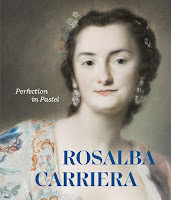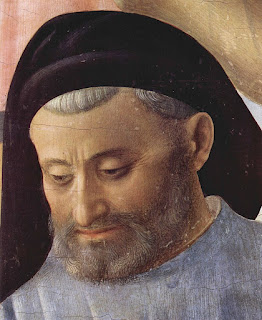NEW - Nunzia De Girolamo – politician and television presenter
Lawyer who moved from debating to dancing
Politician and lawyer Nunzia De Girolamo, who served as Minister of Agriculture in the government of Enrico Letta from 2013 to 2014, was born on this day in 1975 in Benevento in Campania. Nunzia became a member of the Italian parliament, representing Silvio Berlusconi’s People of Freedom party, in 2008, and she was re-elected to parliament in 2013. She went on to become the youngest member of the Letta cabinet and one of just seven female politicians appointed. While growing up, Nunzia attended the Liceo Classico Pietro Giannone in Benevento and then entered the faculty of jurisprudence to study law at the University of Rome La Sapienza. After graduating, she went into the legal profession. Nunzia worked in the fields of civil law, employment law, and commercial law before going into politics. She became a member of Forza Italia, but left the party in 2009. Voters chose her as an individual member of the People of Freedom party, when she stood for parliament for the second time. In 2011, she married Francesco Boccia, the Minister for Regional Affairs and Autonomy. They had a daughter, who they named Gea. Read more…
_________________________________________
Stefano Magaddino - mafioso
Longest-ruling Mafia boss in US history
Stefano Magaddino, the Sicilian mafioso who went on to enjoy the longest period of power enjoyed by any crime boss in the history of the American Mafia, was born on this day in 1891 in Castellammare del Golfo. Known as ‘The Undertaker’ or ‘Don Stefano’, Magaddino controlled a crime empire radiating outwards from Buffalo, on the shores of Lake Erie in New York State. Geographically, it was a vast area, stretching from the eastern fringe of New York State to its western outposts in Ohio and extending north-east almost as far as Montreal in Canada, its tentacles reaching across the Canadian border from Buffalo even into Toronto. One of the original members of The Commission, the committee of seven crime bosses set up in 1931 to control Mafia activity across the whole of the United States, Magaddino was head of the Buffalo Family for more than half a century. He died in 1974 at the age of 82, having survived all the other Commission members, including the founder Charles ‘Lucky’ Luciano and Chicago boss Al Capone, with the exception of his cousin from Castellammare, Joseph Bonanno, who along with Luciano, headed one of the Five Families of the New York underworld. Read more…
___________________________________
Andrea Zanzotto - poet
Writer drew inspiration from landscapes of Veneto
Andrea Zanzotto, who was regarded as one of Italy’s greatest 20th century poets, was born on this day in 1921 in Pieve di Soligo, the village near Treviso where he lived almost all of his life. Zanzotto, who spent 40 years as a secondary school teacher, wrote 15 books of poetry, two prose works, two volumes of critical articles and translations of French philosophers such as Michaux, Leiris and Bataille. His first book of poetry, Dietro il paesaggio (1951), won a literary award judged by several noteworthy Italian poets. Critics reserved their greatest acclaim for his sixth volume, La beltà (1968), in which he questioned the ability of words to reflect truth. Zanzotto, whose verse was consistently erudite and creative, was known for his innovative engagement with language and his fascination with the rugged landscapes of the Veneto, from which he drew inspiration and provided him with much symbolism. His upbringing was difficult at times because his father, Giovanni Zanzotto, a painter who has trained at the Bologna Academy of Fine Arts, was a committed supporter of the Socialist politician Giacomo Matteotti, who was murdered by Fascist thugs in 1924 a few days after accusing Mussolini’s party of electoral fraud. Read more…
_______________________________________
Daniele Comboni – Saint
Missionary who worked miracles after his death
The Feast Day - festa - of Saint Daniel Comboni - San Daniele - is held on this day every year in Italy. Saint Daniel, who was a Roman Catholic missionary to Africa, died on this day at the age of 50 in 1881 in Khartoum in Sudan. He was canonised in 2003 by Pope John Paul II in recognition of two miracle cures claimed to have been brought about by his intercession. Comboni was born in 1831 at Limone sul Garda in the province of Brescia in Lombardy in northern Italy. His parents were poor and he was the only one of their eight children to live to become an adult. Comboni was sent away to school in Verona and after completing his studies prepared to become a priest. He met and was profoundly influenced by missionaries who had come back from Central Africa and three years after his ordination set off with five other priests to continue their work. After they reached Khartoum some of his fellow missionaries became ill and died because of the climate, sickness and poverty they encountered, but Comboni remained determined to continue with his mission. On his return to Italy, while praying for guidance at the tomb of Saint Peter in Rome, Comboni came up with the idea of a missionary project to save Africa. Read more…
_____________________________________
Book of the Day: The Mafia at Apalachin, 1957, by Michael Newton
On November 14, 1957, state troopers raided an estate in Apalachin, New York, and arrested 59 affluent men, with nearly as many more escaping through the surrounding woods. The next morning's headlines hailed the gathering as a summit meeting of organised crime, alerting America to the reality of a national Mafia whose existence had been hotly debated. This first in-depth study of that historic meeting chronicles how it changed the course of American history by inspiring federal legislation to crack down on labour racketeering; forcing drastic policy revisions within the U.S. Department of Justice; and prompting charges of criminal fraud in one of America's most heatedly contested presidential elections. By explaining the context and consequences of this rarely understood historical footnote, The Mafia at Apalachin, 1957 establishes the gathering at Apalachin as a pivotal event in the history of syndicated crime and of the government's response to the Mafia.The late Michael Newton was an award-winning author of more than 250 books on topics ranging from cryptozoology to civil rights and organised crime. He lived in Nashville, Indiana.



.jpg)

.jpg)





.PNG)
.jpg)




.jpg)
.png)





.jpg)





_2.JPG)
.jpg)



